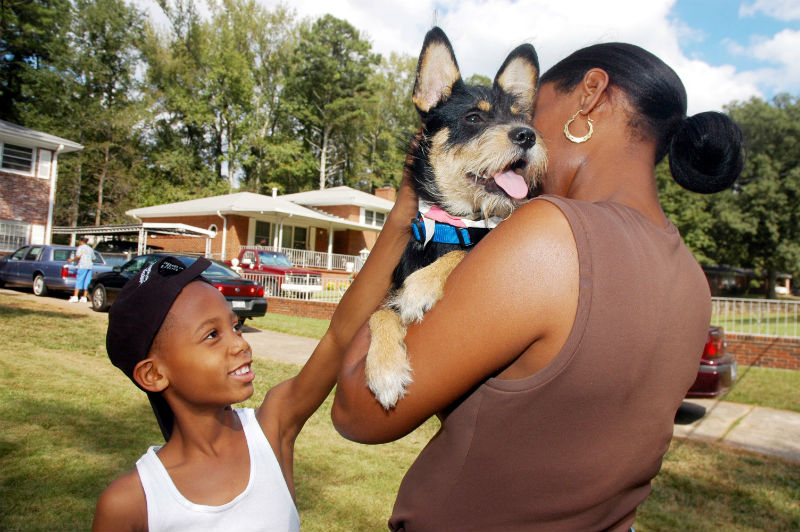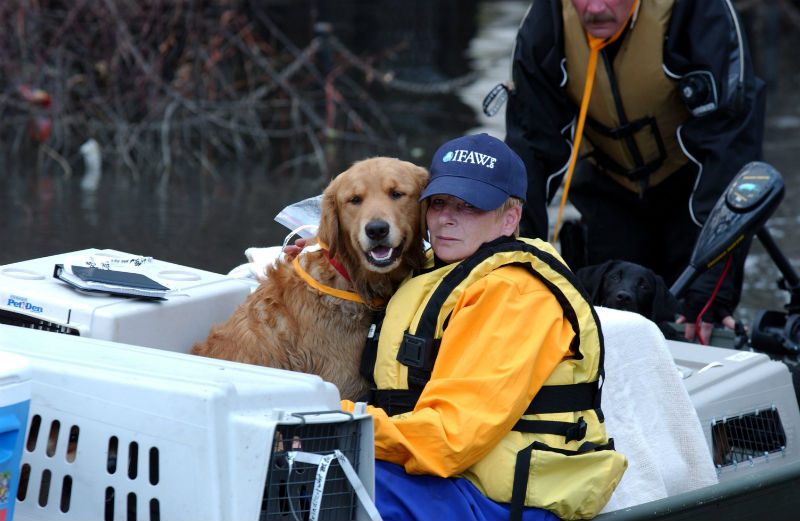An animal activist reflects on her animal rescue mission after Hurricane Katrina.
We sped down empty highways led by police escort, parking under a flooded overpass. Black Hawk helicopters hovered overhead. Melodious jazz music was replaced by the sound of evacuation orders projected over unseen loudspeakers.
Ten years ago I was in New Orleans just after the force of Hurricane Katrina mounted and flooded the Big Easy. The storm’s impact on the people and animals of New Orleans was unimaginable. Aid workers were called in from near and far. I was honored to be deployed as part of the International Fund for Animal Welfare’s (IFAW) animal rescue team.
Pets and people were all sharing space at the Lamar Dixon Expo Center. We joined them in our dilapidated, rented RV. There were horses, pigs, lots of dogs and a few cats -all sharing space in stalls intended for exhibition rather than emergency shelter. Volunteers took care of the whole menagerie and kept careful notes to mark names and addresses in hopes of reuniting pets once the dust settled.
The city was divided in quadrants and our team was assigned a new area each day. Our job was to navigate the streets with small boats and to rescue any animals that we could find. We knocked down doors and climbed through windows. We found large dogs howling on roofs, small dogs yipping on balconies, frightened cats hiding under furniture and even a 300 pound potbellied pig named Rooty and her owner Jim. He ignored the orders to leave, holding out hope that maybe, just maybe both he and his pig could get out.
Walking into an abandoned school, there was a Rottweiler and a Shih Tzu each hiding in a classroom cupboard. They had been alone in this makeshift shelter, their owners forced to leave several days before. They seemed very happy to see us – walking into their carriers without even a bark. We gave them food and water and brought them to the shelter. That was a good day.
More than 200 animal groups worked together to save thousands of animals. Somehow through all of the chaos, many pets eventually made their way back home. I was lucky enough to reunite an 8-month-old terrier puppy, named Coco, with her family. They had relocated to Decatur, Georgia just outside of Atlanta and Coco was being taken care of at a shelter at Louisiana State University. Coco gave kisses to the whole family especially her 7-year-old brother, DJ, who happily carried her inside. I went home with a smile on my face, feeling that I had made a small difference in the wake of that terrible storm.
Since then, we have passed national legislation to include pets in disaster planning so that they are rescued and sheltered too. That will make a big difference for families like Jim and DJ’s.
The past few weeks, national and international animal rescue teams have been in Louisiana practicing their skills at a disaster response boot camp. They recreated hands-on water rescue scenarios using animal mannequins, boats and specialized equipment and refreshed their skills on pet first aid, animal sheltering and fire rescue.
A decade later, things have improved. We are better organized and better prepared. We can never let another Katrina happen again.

